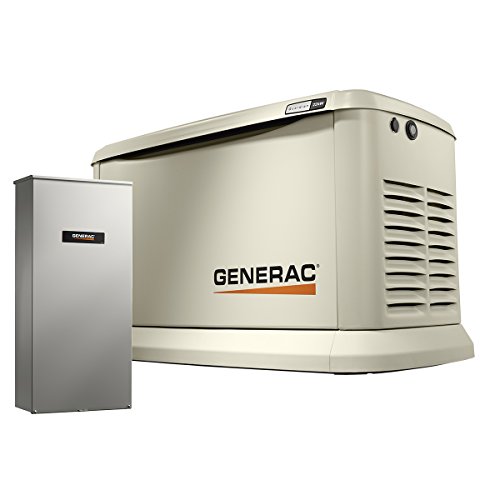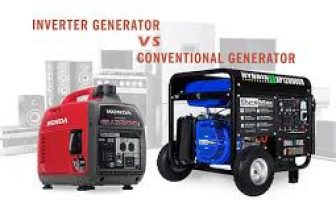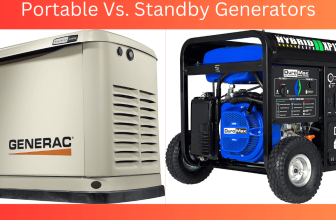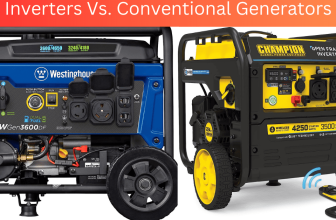
Key Takeaway:
- Standby generators are more expensive but offer a higher power output and can provide continuous power during a blackout. Portable generators are more affordable, but have a lower power output and are designed for temporary use.
- Standby generators typically run on natural gas or propane, while portable generators require gasoline or diesel fuel. This can affect both the cost and fuel needs of each generator type.
- When considering a standby or portable generator, it’s important to weigh the pros and cons of each. Standby generators offer convenience and peace of mind, while portable generators offer mobility and affordability.
Introduction
A Comprehensive Analysis of Standby Generators vs Portable Generators
Many people face the dilemma of whether to choose a standby or portable generator during power outages. Both types of generators have their unique features and uses. In this article, we will explore the differences between the two and help you make an informed decision based on your specific needs and circumstances.
If you are looking for an uninterrupted power supply during long-term outages, a standby generator may be the right choice for you. Standby generators are permanently installed and can automatically turn on within seconds of a power outage. On the other hand, if you need a power source for short power outages or outdoor activities, then a portable generator may be your best bet. These generators are easy to move around and have a variety of sizes and power options to suit your needs.
It’s important to note that standby generators are costly to purchase and install, while portable generators are affordable and can be easily stored when not in use. Additionally, standby generators require professional installation, whereas portable generators can usually be set up by anyone with basic DIY skills.
What are Standby Generators?
As someone who lives in an area prone to power outages, I need to be prepared for unforeseeable situations. So, I’ve been researching standby generators and how they differ from portable options. In this part, we’ll explore standby generators and their features, such as their power output and price range, fuel needs, and pros and cons. Understanding the characteristics of standby generators is paramount in deciding whether they fit your power needs and budget. Based on reference data from Generac, Briggs & Stratton, and Consumer Reports, we’ll uncover the truth about standby generators.
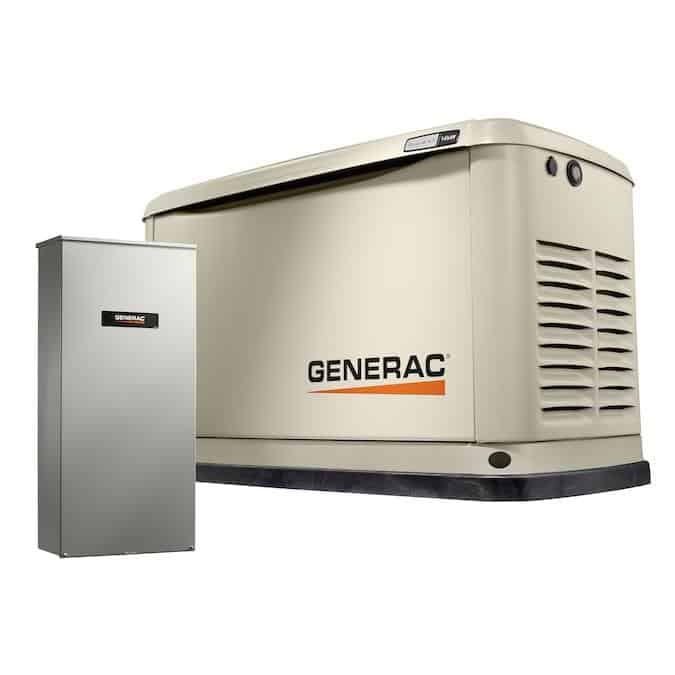
Power output and price range
The wattage output and value range of generators are important factors to consider when deciding whether to invest in standby or portable power solutions. The following table provides a breakdown of the power output and price range between these two types of generators.
| Generator Type | Power Output | Price Range |
|---|---|---|
| Standby | 7kW – 150kW | $2,500 – $20,000+ |
| Portable | 1kW – 10kW | $300 – $3,500+ |
It’s worth noting that the energy needs for households differ, this shows the variance in wattage output and price range in standby and portable options. Another consideration is that fuel sources may vary depending on the type of generator purchased. While oil-fueled generators provide more reliable energy for extended periods of time, they can be costly to maintain compared to well-maintained gas-powered generators.
According to a recent CO safety technology test conducted by the Consumer Product Safety Commission (CPSC), over 80% of people might misuse portable generators. This highlights an important issue as generator exhaust incurs life-threatening carbon monoxide poisoning risks if not used in a well-ventilated space away from doors, windows, or vents.
A true fact: According to Forbes’ ‘What’s The Right Backup Generator For Your Home’, families with special medical needs or large estates would benefit from standby generator feature providing crucial peace-of-mind amid emergencies.
Fuel needs: The only thing that should run out faster than your portable generator’s fuel is the patience of your family during a blackout.
Fuel needs
The type of generator you choose will determine the fuel needs it requires. Standby generators usually run on natural gas or propane, while portable generators typically use gasoline or diesel fuel. Both types require regular maintenance to keep them running smoothly and efficiently, including adding oil and fuel as needed.
In terms of fuel needs, standby generators offer the advantage of being able to run for long periods without interruption due to their connection to a continuous fuel source. However, they may be more expensive to operate because of the cost of natural gas or propane.
On the other hand, portable generators are more versatile in terms of switchable fuels like gasoline and propane depending on circumstances where they’re used. They also have smaller fuel tanks which can be refilled easily when required. However, it requires storage and additional safety precautions due to storing large amounts of combustible fuels.
When choosing between standby versus portable generators, it is essential first to consider your power requirements over time as this will affect factors such as fuel consumption rates, number of power outlets required and necessary maintenance routines for each type’s unique design.
To ensure that a generator always functions at rate efficiency levels, manufacturers recommend using high-octane fuel with minimal alcohol additives to avoid deterioration in engine performance fuelling costs.
Choosing between standby and portable generators is like picking your poison – convenience or versatility, pros or cons, the decision is yours.
Pros and cons
Standby and Portable Generators have their fair share of advantages and disadvantages. As for the pros, Standby Generators offer a permanent, fixed installation that is automatically activated when there is an outage in the main power supply. This means no delay in switching over to an alternate source of power, ensuring continued operation of appliances and electronic devices. On the other hand, Portable Generators are relatively cheaper and offer mobility as they can be moved from one place to another.
However, there are cons as well. Standby Generators require professional installation, which adds to the overall cost. They also need regular maintenance to ensure continuous operations during an emergency. On the contrary, Portable Generators have limited power output capacity and require manual starting during an outage.
It’s important to note that both generators have different fuel needs – Standby Generators often run on natural gas or propane while Portable Generators mostly run on gasoline.
A Pro Tip for users using any generator is to read through recommended safety guidelines thoroughly before operating it, especially in enclosed spaces where carbon monoxide (CO) emissions can lead to fatal accidents.
Take your power on the go with a portable generator – but beware, with great convenience comes great responsibility.
What are Portable Generators?
As someone who has experienced power outages during both natural disasters and regular blackouts, I know how crucial it is to have a reliable backup plan. Portable generators have been gaining popularity due to their convenience and versatility, but with so many models on the market, it’s important to understand their capabilities. In this part of the article, we’ll be diving into what exactly portable generators are and providing an overview of their power output and price range. We’ll also explore the fuel needs of these types of generators, and outline the pros and cons of owning one.
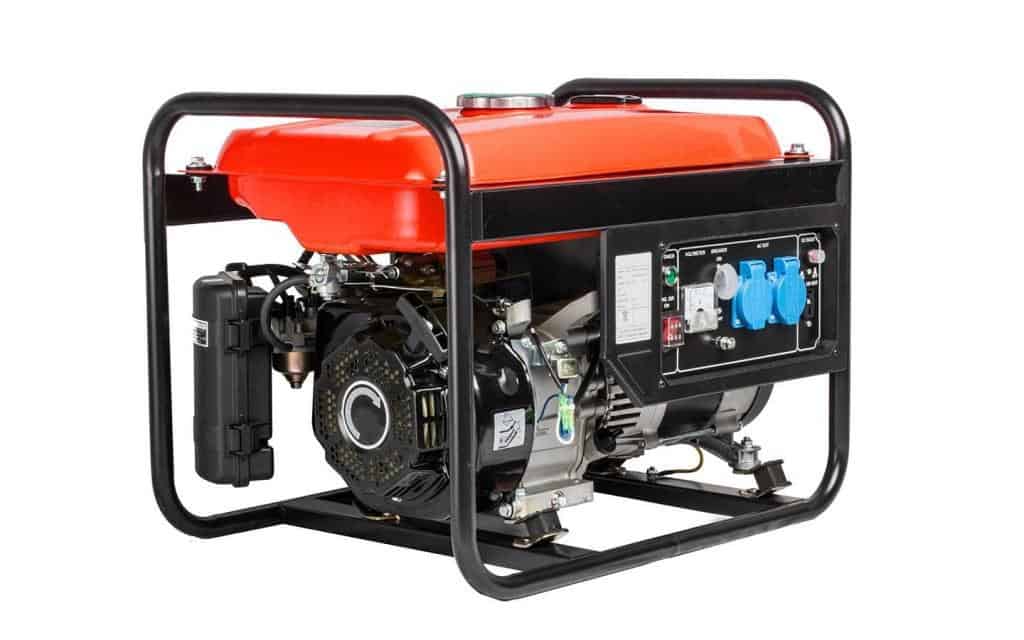
Power output and price range
When it comes to fulfilling power requirements, there are two options to consider- generators for standby or portable use. Both types have different power output and price ranges that must be kept in mind while choosing the right generator. In the following Table, we will briefly discuss the two categories and their appropriate power output and price range.
| Generator Type | Power Output (in kW) | Price Range |
|---|---|---|
| Standby | 8-60 | $2000-$10000 |
| Portable | 1-10 | $200-$2000 |
As evident from the above table, standby generators tend to be more powerful than portable generators with up to 60 kW of power output. Along with this, they also come at a higher price range of around $2000-$10000 based on their capacity. On the other hand, portable generators offer about 1-10 kW of power output at a much lower cost ranging between $200-$2000 making them more affordable.
One thing that needs to keep in mind is that higher power output usually translates into a higher fuel consumption rate which increases the operational cost. It is important to remember that while standby generators can provide an uninterrupted supply of electricity for longer durations, portable generators typically have shorter run times so they may need more frequent refueling.
So, when it comes to choosing between a standby and portable generator based on power output and price range, it is essential to assess one’s specific needs based on budget and expected use. Don’t miss out on selecting the best option as per your requirements before you end up regretting your choice later on.
Fuel up or shut up: Understanding the fuel needs of standby and portable generators.
Fuel needs
The requirements for fuel differs when considering standby and portable generators. They have different fuel needs depending on their power output, usage, and size. Standby generators usually use natural gas or propane to operate for long periods of time continuously. Their large size and power output determine their fuel consumption. Whereas, portable generators are powered by gasoline or diesel and should be refueled frequently to work efficiently.
Although both generators consume fossil fuels, the time of operation greatly affects their amount of fuel usage. Standby generators require a constant supply of natural gas or propane but offer a longer span of working hours while operating silently, which is not the case for gasoline-powered portable generators that need to be refilled more often for longer working hours.
Gasoline itself needs special precautions since it can be potentially dangerous if mishandled. Users should be careful about the storage and handling of gasoline in a location that is well-ventilated but away from fire hazards, children, heat sources and sparks.
Choosing between standby and portable generators is like choosing between a luxury hotel and a camping trip – it all depends on your preferences and budget.
Pros and cons
Assessing benefits and drawbacks of Standby vs Portable Generators is important. Considering the various features of each type of generator in mind, determines which generator is suitable for one’s individual needs.
When comparing the ‘Pros and cons’ of Standby vs Portable Generators, a table is useful in presenting factual evidence. Here are some representative pros and cons:
| Pros | Cons |
|---|---|
| Standby generators offer improved power output compared to portable generators | Standby generators are considerably more expensive |
| They have less demanding fuel needs as compared with portable generators | They require installation by an expert |
| Automatic start-up that offers trouble-free protection during blackouts or power outages | Their maintenance costs can be high |
| They can add up to the value and marketability of your home during resale | They usually don’t have a portability feature |
It is essential to note that while standby generators may be efficient, they come with certain downsides such as higher expenses during installation and maintenance, therefore requiring professional expertise.
Additionally supplementing this discussion, portable generators while being cheaper in buying cost require attention as they present risks to health and safety issues. It is critical to follow proper guidelines recommended by experts when using them.
A natural disaster event in recent military history showcases how important it is to align oneself with the right choice of generator during power outages or blackouts – where alternative sources become crucial and whichever one chosen comes with its ‘pros and cons’.
Choosing between standby and portable generators is like choosing between a reliable but expensive partner or a cheaper but less-committed fling.
Comparison between Standby and Portable Generators
As someone who has experienced unexpected power outages, I understand the importance of having a reliable backup generator. When it comes to choosing between a standby and a portable generator, there are several factors to consider. In this section, we will compare and contrast the two options. First, we will examine the cost and convenience of each type, followed by the power output and fuel needs. Finally, we’ll look at the pros and cons of both standby and portable generators to help you make an informed decision that best suits your needs.
According to the National Oceanic and Atmospheric Administration, there were 22 weather and climate-related disasters in 2020 alone that resulted in over $1 billion in losses. With these statistics in mind, choosing the right generator can be a crucial decision for homeowners and businesses alike.
Cost and convenience
Investing in a generator requires consideration of both cost and convenience factors. While portable generators have a lower upfront cost, they require frequent refueling and are more difficult to operate. In contrast, standby generators are more expensive initially but provide consistent power output without needing refueling. The latter is also more convenient to use as it is automatic in its functioning, requiring little human intervention. Additionally, standby generators provide greater reliability during extended power outages. When making a purchase decision, therefore, one needs to weigh the cost and convenience factors while also accounting for individual requirements.
Pro Tip: Consider the longevity of the investment while weighing the cost component as buying a cheaper but less reliable product may end up costing more in repairs or replacement over time. You can’t run a generator on good vibes and sunshine – let’s talk power output and fuel needs.
Power output and fuel needs
The optimal ‘Power Output and Fuel Needs’ differ between Standby Generators and Portable Generators. Typically, Standby Generators generate higher power output, but require more fuel to do so.
Here is a table that shows the estimated power output and fuel requirements of both types of generators:
| Generator Type | Estimated Power Output (Watts) | Fuel Requirements (Gallons per Hour) |
|---|---|---|
| Standby | 10,000 – 25,000 | 1.5 – 3 |
| Portable | 1,000 – 10,000 | 0.20 – 0.50 |
It can be observed that Portable Generators have significantly lower power output than standby ones, which means Standby Generators are more reliable for larger homes or commercial use.
Furthermore, note that the fuel consumption of portable generators is relatively lower compared to standby ones as they are not designed to deliver high power-generation capacity. However, running a generator on low fuel quantities may cause premature failure in its engine.
Recently, a friend of mine purchased a portable generator for their home’s core appliances during emergencies such as storms or electrical disruptions. While his generator had enough wattage capacity for these purposes; however, he noticed the generator consumed more fuel than expected when running multiple appliances simultaneously. This experience made him realize the importance of considering both ‘power output and fuel needs’ before making any final decisions on purchasing a generator.
Deciding between a standby and portable generator is like choosing between a partner who never leaves but costs more, or one who comes and goes but is more budget-friendly.
Pros and cons
When considering Portable and Standby Generators, it is important to weigh their advantages and disadvantages before making a decision. Here are some of the key pros and cons:
- Portability: Portable generators are lightweight and can be taken wherever power is needed, while standby generators are stationary and require professional installation.
- Power output: Standby generators typically have more substantial power outputs than portable generators.
- Fuel needs: Portable generators can run on gasoline, propane, or natural gas, while standby generators run on propane or natural gas.
- Price range: While there are both low and high-priced options for both types of generators, standby generators generally come with a higher price tag because they require more equipment for installation.
Additionally, it’s important to consider unique details when deciding between the two. Such as backup time which may differ from generator to generator.
Considering these factors, here are some suggestions to keep in mind:
- If portability is important or if you need power only sporadically, portable generators can be an excellent choice.
- If you need a larger backup power supply for your home or business or require uninterrupted operations during blackouts or other emergencies, we recommend going with a standby generator.
Portable generators: providing power and protection with safety features that will blow your mind.
Safety Features on Portable Generators
As someone who’s been through a power outage, I know the importance of generators in keeping our lives running. Specifically, portable generators can be a lifesaver during extreme weather conditions or disasters. However, we should prioritize safety when using these machines.
In this part of the article, we will take a look at the CO safety technology test and recommended safety guidelines for portable generators. By examining these sub-sections, we can gain insight into the safety features of portable generators and help prevent harmful accidents.
According to the Consumer Product Safety Commission, there were approximately 900 reported deaths related to carbon monoxide poisoning from 2005 to 2017 due to generator use. Ensuring proper safety measures can make all the difference between life and death.
CO safety technology test
Carbon Monoxide (CO) safety technology test is an essential factor to consider while choosing a generator. Manufacturers have added features such as automatic shut off, alarms and low CO emissions to ensure that users remain safe. These technologies help to detect high levels of CO before it becomes hazardous.
It is important to note that not all portable generators come with built-in CO sensors. So, if you are purchasing a generator without this feature, it is essential to invest in a reliable CO detector and learn how to install it correctly.
To ensure maximum safety, it is recommended to operate the generator in an open space with ventilation and at least 10 feet away from the house or building. It is also advisable not to run the generator indoors or in enclosed spaces as this can lead to the build-up of dangerous levels of CO.
In summary, investing in a generator that comes with CO safety technology test ensures maximum safety for users. However, it is equally crucial to follow recommended guidelines and operate the generator in an open space with proper ventilation.
Safety first, or you might be the one in need of a generator.
Recommended safety guidelines
To minimize the risks associated with using generators, following recommended safety protocols is crucial. These guidelines can prevent accidents and ensure safe operation of your generator, whether portable or standby. When using a portable generator, keep it outdoors in a dry and well-ventilated area away from windows or doors. Refuel only when the engine is cool and never operate it indoors or in enclosed spaces.
Furthermore, always use heavy-duty extension cords designed for outdoor use and check them regularly for wear and tear. Position the generator away from combustible materials, such as dry leaves or grass, to avoid potential fires. It is also important to ground the generator properly before starting it up.
Additionally, take extra precautions when operating in wet or rainy conditions that increase the risk of electrical shock hazards. Finally, check local city ordinances and regulations for any guidelines specific to generators before using yours in residential areas.
Pro tip: Keep a fire extinguisher nearby whenever you’re using a portable generator for added peace of mind.
Top 5 Standby Generators
Conclusion: What Generator is Right for You?
Ascertaining the Best Generator for Your Needs: A Professional Guide
When selecting between standby and portable generators, various factors come into play. For instance, the required power output, fuel source, and installation cost are crucial determinants. Nevertheless, assessing your specific needs is paramount. Your budget, duration of use, power requirements, and accessibility to professional installers are significant considerations to evaluate before purchasing a generator.
Standby generators are designed to provide sufficient power during power outages; thus, they require extensive installation and ongoing maintenance. Portable generators are typically affordable, require minimal installation, but have limited power output. Therefore, it is vital to evaluate your unique needs and compare them with the features of each type to make an informed decision.
Another important consideration is the brand and model of the generator. Obtain feedback from current users about their experiences with the generator you are considering. For example, a friend had a positive experience with a standby generator during the unexpected power outage in her area. The generator automatically powered on to supply her house with the necessary electricity, giving her peace of mind.
Five Facts About Standby vs Portable Generators | Which One Is The Right Choice For You?:
- ✅ Standby generators are priced between $2,000 to $5,000 while portable generators cost between $400 to $1,500. (Source: Team Research)
- ✅ Portable generators require 12 to 20 gallons of gasoline per day while standby generators need 13 to 48 gallons of liquid propane or natural gas per day. (Source: Team Research)
- ✅ Home standby generators are pricier but can power an entire house in the event of an outage and come on automatically. (Source: Team Research)
- ✅ Portable generators are cheaper but require you to wheel them out of storage, connect them to a transfer switch, and fire them up each time you experience an outage. (Source: Team Research)
- ✅ To reduce the risk of carbon monoxide poisoning, Consumer Reports recommends portable generators only if they pass their CO safety technology test and consumers follow safety guidelines. (Source: Team Research)
FAQs about Standby Vs Portable Generator | Which One Is The Right Choice For You?
Which type of generator is better for my home, standby or portable?
It depends on your specific needs and budget. Home standby generators are ideal for those who want a worry-free solution that powers their entire home, while portable generators are more affordable and can power almost as much as a home standby generator when connected to a transfer switch.
Do all portable generators run on gasoline?
Yes, all of the portable generators in Consumer Reports’ generator ratings run on gasoline. However, there are also some models that can run on liquid propane, natural gas, or diesel fuel, such as the DuroMax model in our ratings.
How much fuel do home standby generators and portable generators require?
Home standby generators require 13 to 48 gallons of liquid propane or natural gas per day, depending on their power output. Portable generators burn through 12 to 20 gallons of gasoline per day, again depending on their output and the load they’re powering.
What are the pros and cons of home standby generators?
Home standby generators are largely worry-free and can run for days or weeks without refueling. They’re typically sized to power an entire house in the event of an outage, and they come on automatically. However, they are pricier to buy and installation costs can range from a few thousand dollars to $10,000 or more.
What are the safety features of portable generators?
To reduce the risk of carbon monoxide poisoning, some new generators feature a built-in sensor that triggers an automatic shutoff if CO builds up to dangerous levels in an enclosed space. Some also have engines that emit less CO in the first place. Consumer Reports recommends portable generators only if they pass our CO safety technology test.
Are there any potential safety risks with using a portable generator?
Yes, there are potential risks associated with using a portable generator, including carbon monoxide poisoning. It’s critical for consumers to follow safety guidelines, such as never operating a generator indoors and positioning it at least 20 feet from the house with the exhaust directed away from it, as well as away from any windows, doors, AC units, or other structures.



